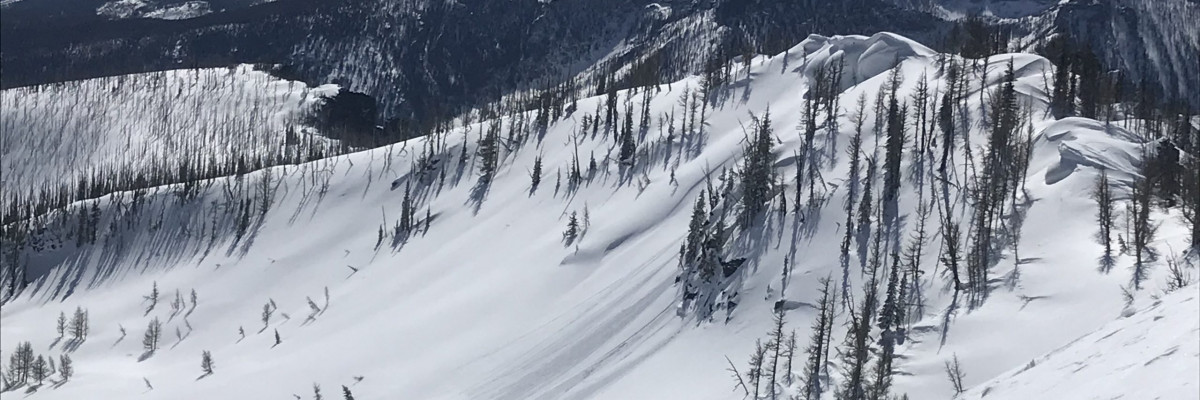The avalanche danger in the west-central Montana backcountry is MODERATE.
Good Morning. This is Travis Craft with the West Central Montana Avalanche Center advisory on Tuesday, April 6, 2021. This is our last regular advisory of the season. This advisory does not apply to operating ski areas and expires at midnight tonight. The USDA Forest Service is solely responsible for its content.
Today’s advisory is dedicated to you, everyone that sent in observations, read the forecast, took an avalanche class, or donated money, time or equipment. This resource is the result of continued community support and partnerships. On behalf of the WCMAC, thank you for another great season.
Weather and Snowpack
Over the last 48 hours, the snowpack has refrozen above 5000 feet. Temperatures range from 21 degrees to 31 degrees this morning. Over the last 24 hours, the advisory area has accumulated 3 to 5 new inches of snow. The weather continues to alternate between winter and spring in the mountains.
The refreezing of the snowpack will keep wet avalanche problems in check until we have another warm-up. The new snow is sitting on a refrozen surface. Look for loose dry avalanches to be small today. If the sun comes out look for the loose dry to change over to loose wet avalanches on sun-exposed slopes. If you see roller balls or start to punch through the snowpack it is time to find shadier aspects.
Timing is everything with spring conditions. Stability will be greater in the morning and decrease throughout the day.
The Bottom Line
Warming temperatures will increase avalanche danger throughout the day. Roller balls are signs to change aspect. Use small test slopes and hand pits to check new snow depth and bonding to old snow surfaces. Dig a pit. Pay attention to terrain traps. Search for instabilities, not stability. Reassess conditions throughout the day and stay alert for signs of instability. Look for red flags. Carry a beacon, shovel, and probe.
Special Announcements
We want to reiterate our most sincere thanks for your support this season. Providing west-central Montana’s avalanche forecasts and free education programs is made possible in part through your generosity and our gracious sponsors’ help. This winter, we succeeded in reaching more people than ever before and provided new educational opportunities for all backcountry user groups. Together, we can save lives and continue creating the most fun, safe, and responsible backcountry community possible. Again, thank you for your continued support. We couldn’t do it without you!














